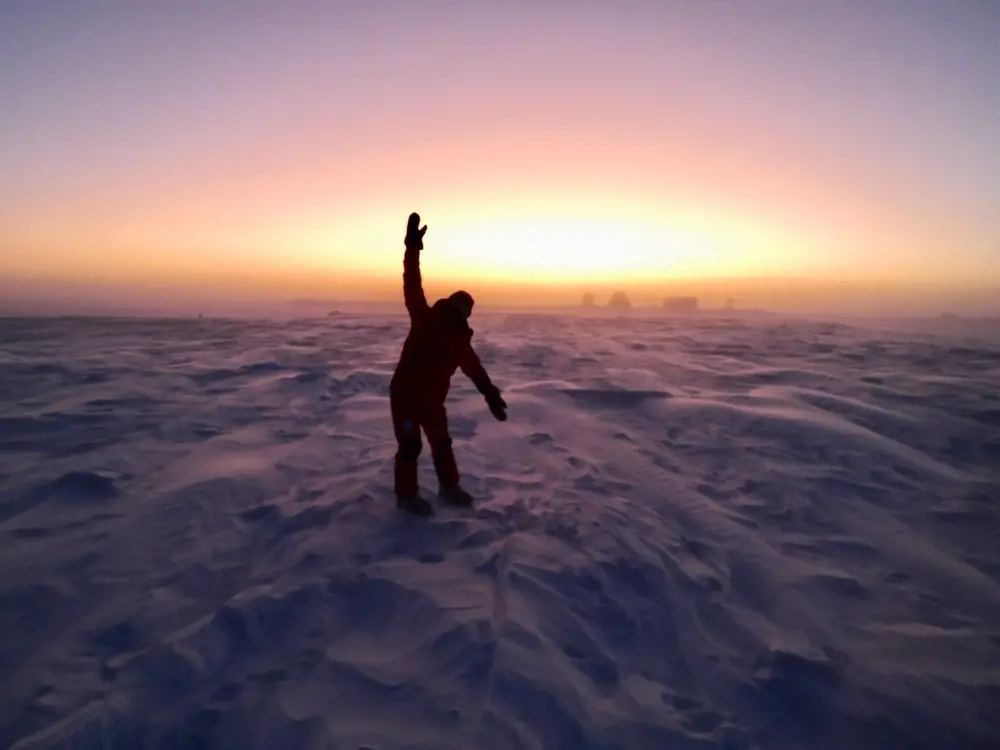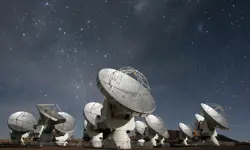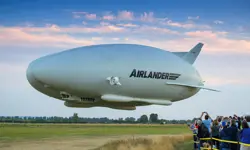
Q&A: Meganne Christian, reserve astronaut
Why did you become interested in science and engineering?
My dad was a scientist and I was interested in what he was doing growing up. At school, my favourite subjects were maths and languages. It was hard to combine those subjects, and engineering is not necessarily a career that you consider as a girl – which is ridiculous. When looking at university degrees I discovered the Co-op Scholarship at the University of New South Wales, which offered a series of industrial training placements. I thought it would be a great experience to help me decide what I wanted to do with my life. I fell into engineering, but I am glad I did.
How did you get to where you are now?
I enjoyed industry but decided to pursue a PhD in nanomaterials. It was a challenging but great experience, which prepared me for the rest of my career.
After my PhD I wanted to gain some international experience and use my foreign language skills. I was informed of a postdoc position at the National Research Council of Italy, which I applied to from Australia. Due to time zone differences, one interview was conducted in a McDonald's car park! I ended up working there for 9 years, focusing on applications for the exciting material graphene in alternative energies and space.
I participated in a European project called the Graphene Flagship, where I worked on graphene-coated loop heat pipes, which are used for cooling in satellites. My first insight into what working in space might be like was during a parabolic flight, testing the pipe’s functionality in microgravity.

Meganne in Antarctica during one of her research expeditions © Meganne Christian
I’m fascinated by Antarctica and the National Research Council of Italy has permanent observatories at Concordia Station in Antarctica. Each year an expression of interest form is circulated to determine who would like to spend a year in Antarctica. Initially, I ignored it as I never thought I would get accepted. The second year, I applied and I was selected.
This was a big change. Antarctica is a completely isolated, extreme environment, but I was also going to be an atmospheric physicist and meteorologist. I was worried that I didn’t have the right skills, but engineering prepared me well. In Antarctica, you are the custodian of other people's experiments, ensuring they work and that data is transmitted to Europe. I really enjoyed doing this.
It also put me in good stead when applying to be an astronaut for the European Space Agency (ESA) in 2021. I didn’t expect to get through, yet, I was selected in the final 17 as one of the Class of 2022 ESA astronauts as a Member of the Reserve!
What has been your biggest achievement to date?
My time in Antarctica, as I didn't think I had the right skills. I only had a two-week crossover with my predecessor, to learn everything I needed for that whole year. But I succeeded and really enjoyed it. The principal investigators were really happy and some of them said that I'd set the benchmark for future winter overs [‘winter over’ is the term for staying in Antarctica over the winter, as all aircraft traffic is discontinued]. The experience was life changing.
What would you say your favourite thing is about being an engineer?
Problem solving. I enjoy the methodical, systematic way of thinking and it has helped me throughout my engineering journey. I enjoy considering the next steps to achieve our goals.
Quick-fire facts
Meganne's engineering inspiration... 💡
Age:
36
Qualifications:
Bachelor of engineering and PhD in industrial chemistry from the University of New South Wales
Biggest engineering inspiration:
Professor Rose Amal, one of my professors at the University of New South Wales. She is a pioneering woman in the field of nanomaterials and a lovely person
Most used technology:
Phone
Three words to describe yourself:
Scientist, engineer, explorer
What does a typical day look like for you?
Currently I am working at the UK Space Agency, in the exploration team. After being selected as a Member of the Astronaut Reserve, I wanted to be more involved with the space sector. I’m investigating the future strategy for space stations, as we’re entering a new era of commercial space stations, now that the ISS is retiring in 2030.
There are numerous companies who are building space stations, so I’m forging partnerships with them, enabling the UK to continue its involvement with space research. I attend a lot of meetings and great conferences.
I also engage in outreach activities to hopefully inspire the next generation into STEM.
What would your advice be to young people looking to pursue a career in engineering?
It’s easy to worry when choosing your subjects or degree because you think if you don’t enjoy it, you will be trapped into that subject. However, this isn’t the case – you can move around. Engineering is so broad, there will be something that you will enjoy.
Choose something you enjoy, work hard and see how it goes. Look out for interesting opportunities, even if they're not necessarily on your traditional career path. They will enrich your life, providing you with a broader perspective to help solve the world's problems.
What’s next for you?
Next is some exciting training. I am doing everything that I can, so I can be the best astronaut I can be, if that opportunity arises.
***
Meganne Christian is a reserve astronaut for the European Space Agency (ESA) and Exploration Commercialisation Lead for the UK Space Agency
Contributors
Fern is a MEng bioengineering graduate from Loughborough University. She received an Engineering Leaders Scholarship in 2022 from the Royal Academy of Engineering and is a STEM Ambassador. Her goal is to promote the diversity of career possibilities in engineering.
Keep up-to-date with Ingenia for free
SubscribeRelated content
Aerospace

ALMA – the high altitude observatory
The Atacama Large Millimetre/submillimetre Array (ALMA) is the largest and most expensive ground-based telescope built, revolutionising our understanding of stars and planetary systems. Building it in the Atacama Desert in Chile required the ingenuity of hundreds of engineers.

Communicating with outer space
The Royal Academy of Engineering awarded a team at BAE Systems the Major Project Award in June 2016 for their development of a powerful satellite modem system, pivotal in enabling the precise control of the pioneering Rosetta spacecraft and the first-ever soft landing of a spacecraft on a comet.

An aircraft like no other
The Airlander made headlines when it embarked on its first test flight in August 2016 as the world’s largest aircraft. Chris Daniels at Hybrid Air Vehicles Limited, and David Burns, Airlander’s Chief Test Pilot, talk about the engineering that helped it reach this stage and plans for the craft’s future.

Q&A: Lucy Harden
Lucy Harden is a mechanical engineer on BAE Systems’ Digital Light Engine Head-Up Display development programme. She devises innovative solutions for pilots to display essential flight information that sits directly in their line of sight and is overlaid onto the real world.
Other content from Ingenia
Quick read

- Environment & sustainability
- Opinion
A young engineer’s perspective on the good, the bad and the ugly of COP27

- Environment & sustainability
- Issue 95
How do we pay for net zero technologies?
Quick read

- Transport
- Mechanical
- How I got here
Electrifying trains and STEMAZING outreach

- Civil & structural
- Environment & sustainability
- Issue 95